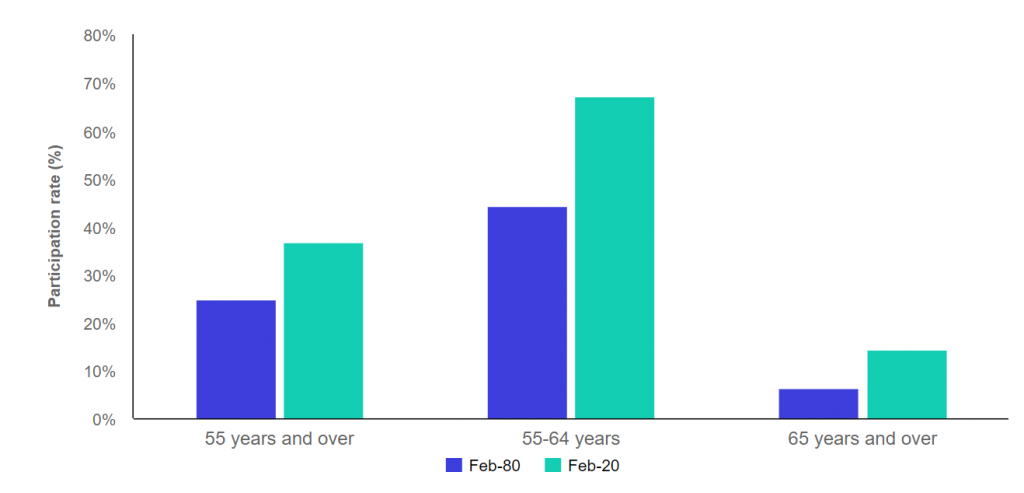The average age of retirement is increasing along with life expectancy placing greater importance on valuing older workers in the workplace. Not only is the mean age of workers going up, but their workplace skills and knowledge are effectively being retained for longer.
According to the Australian Government’s National Skills Commmission, the shape of the Australian labour market has changed significantly over the past 40 years. There has been strong growth in higher skill level jobs, non-routine jobs and services. Female employment and participation have grown strongly, and young people are spending longer in education. Greater use of technology has also changed many jobs.
National Skills Commissioner Adam Boyton said Australia’s labour market has emerged from the initial impacts of the pandemic in a robust fashion. “The State of Australia’s Skills 2021: Now and Into the Future” report finds Australia has managed well the structural changes that have occurred in the labour market over the past few decades.
The two most enduring changes are likely to be the way we do our jobs, known as task change, and the acceleration of changes that were already underway. For example, increasing activity online and the ongoing need for post-secondary qualifications.
Older workers participation
Another long-term trend has been the increase in the share of older workers. The proportion of total employment accounted for by mature age persons (55 years and over) has increased significantly. It has lifted from 10.5% in February 1980 to 19.4% in February 2020.
This equates to a rise in mature age employment of 1,862,700, or an annual average growth rate of 3.4% over four decades to February 2020. The increase in mature age employment, however, must be viewed in the context of the ageing population. Workers are ‘taking their jobs with them’ as they move into the older age cohort.
Other reasons for rising mature age participation include the increase in life expectancy and improved health outcomes. As well as a rise in flexible working arrangements (with mature age people working part-time as they transition to retirement) and an increase in less physically demanding work (due to new technologies).

Source: ABS Labour force Australia
Valuing older workers
Valuing older workers in the workplace means recognising the intangible asset they offer in contributing a different mindset. The cultural and technological gap that can exist between younger and older workers is bridged when both groups acknowledge the benefits of learning from each other.
The years of experience older workers hold is likely to engage a very different perspective than their younger counterparts. Older workers benefit from having in-person education and on-the-job training and generally preference in-person meetings. However, they can be less technologically literate as younger workers.
On the other hand, most younger workers come into the workforce with the digital tools to connect with people from vastly different backgrounds. Younger workers bring a broader world view to the workplace and tend to have greater access to multiple information sources.
5 things older workers can TEACH younger workers
- Building a successful career can take years of experience and many struggles and setbacks
- Soft skills like active listening that help to build relationships and interact effectively with co-workers
- Loyalty that makes others want to work with you and invest in your learning and development
- Mentoring through the office politics and managing appropriate responses to issues
- Skills to handle workplace conflict and positively engage in constructive criticism

5 things older workers can LEARN from younger workers
- Adoption of new technologies that impact how they work within the business and collaborate with other businesses and customers. For example, the value of online rostering and online timesheets
- Benefits of diversity in the workplace as younger workers represent a more diverse generation
- Change is inevitable and how to learn new skills for changing job roles
- The optimism of youth and be inspired to never give up on their dreams
- Different ways to engage and collaborate in the workplace such as brainstorming new ideas



